If I had to come up with one thing, I thank Covid-19 for getting me back into film photography (if using my dad’s point-and-shoot to take family photos in the 90s counts as having been into it).
Back in the beginning of 2020 when I was stuck at home and only a few months into photography, the film SLR look of my recently acquired Fujifilm XT-30 reminded my dad of his good old days of being a photography enthusiast. Topics like how to get the perfect exposure, developing black and white films, composition in different circumstances, you name it, he just couldn’t shut up! So I asked him the whereabouts of those film point-and-shoots I used to use. To my surprise, not only did I reunite with the Pentax Zoom 90 WR after two decades, there was also a Nikkor 50mm f1.4 AF-D sitting in the cabinet without a pairing body.
Being fascinated by the looks of Nikon bodies pre-1990s, I ignored the autofocus feature of the lens and paired it with a Nikon FE2 in only EXC+++++ condition (you know where it sits in the ranking system of Japanese camera sellers) and I was good to go for film photography. Ok, enough about the gear. Being stuck at home also meant that I finally ran out of excuses of doing nothing about the little project that had been in my mind for several years – documenting Beijing’s modern architecture.
The Spark
Though seeing them probably every day and even having lived in one before, I first had a taste of how modern architecture looks by watching a BBC documentary about electronic music called Synth Britannia back in 2010. Being a fanatic about British music at the time, I was not paying much attention to those few scenes of post-war British cityscapes. Instead, I was amazed at how well the background music went along with the scenes and deeply impressed by the narration “By the 1970s, we were living in the future. Victorian slums had been torn down and replaced by ultra-modern concrete high-rises”. For me at the time, it wasn’t the particular architecture style that attracted me. In fact, it was the cold vibe jointly created by the Synth-Pop music and the concrete cityscapes that got me obsessed with it. I fell in love with the yesterday future and I blamed the music for that. Just over a year later, I boarded the plane to study in Sheffield, England.
However, as a music lover and a lifelong football fan, I spent most of my spare time in England going to gigs of the bands I had been listening to for years and matches of my favourite football club despite being at the perfect place to dig deep into post-war modern architecture. I guess the UK was just the perfect place to experience everything I was into back then and I didn’t have time to explore much else.
A Plan was Born
It was not until I came back from England one and half years later that I finally became aware of the term modernist. I stumbled across an account (possibly veronicadelica) on Tumblr one day and just got obsessed with the architectural style of the buildings in their posts.
The Explore feature then successfully hooked me up with more modernist architecture oriented accounts like germanpostwarmodern, socialistmodernism, sosbrutalism, to name a few. Terms like modernist, brutalist, Barbican, began to pop up frequently. I fell in love with the yesterday future once again, and this time it was the architecture to blame. Eventually, having seen more of modernist architecture, I started to relate them to some of the ones I encounter everyday in Beijing as they look blocky, make use of materials like concrete and are often featured in utilitarian residential complexes with minimal ornament as well.
The era in which most of these buildings were built contributed as well as it coincides with the time when China was in what could be called its honeymoon period with Western countries for over a decade roughly from the peak of Sino-Soviet Split until the end of the Tiananmen Square Protests. This post even assured me that they could be regarded as modernist architecture too as they look so similar. Nevertheless, I would just call them modern here for the moment.
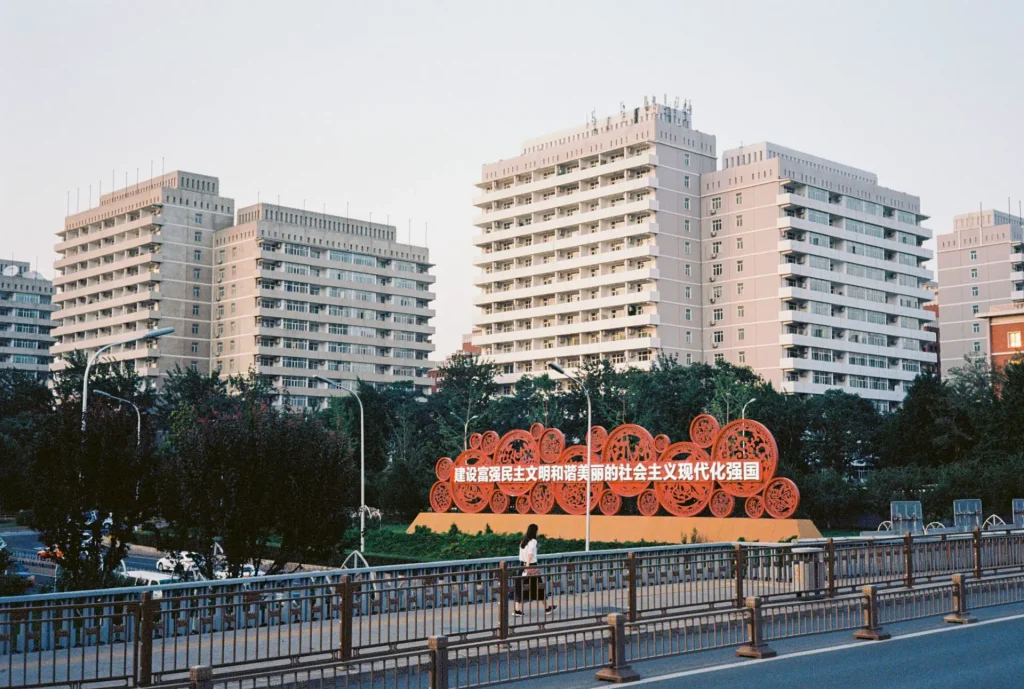
Like Sheffield during the 1960s and 1970s (Sheffield – City on the Move), Beijing is now a fast moving city itself. The old is being constantly replaced by the new everywhere. Though most of the buildings on my list aren’t facing imminent demolition, I have to act quick as they are already being considered as “old and worn-out” by the government. The majority of them have also undergone similar exterior refurbishment, like the Park Hill flats of Sheffield have, by being repainted with colours too bright in my opinion. While scholars have called for change to the architectural style of those square boxes in their academic works, I on the other hand find them rather appealing and the colours of them eccentrically attractive. A seed of documenting them was planted in my brain.
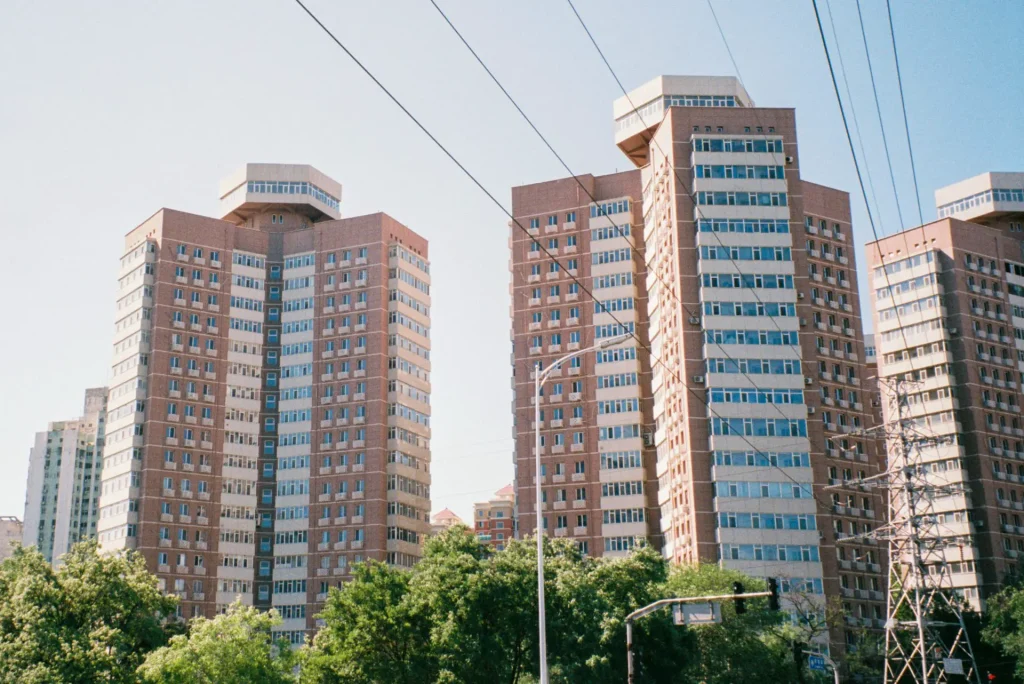
The Project
Over the years, whenever I see a place worth documenting, I would take down the location of it and add it to a wishlist. Those places had been lying there waiting to be shot for a few years before Covid hit and I finally started to move my lazy ass. As the project progresses, the way I photograph has also seen changes.
From four wheels to two wheels
Initially, to reach a target building, I would just drive, find somewhere to park and start shooting. But finding a parking place had not always been straightforward and sometimes time wasting. I eventually found the difficulty of it kept making me skip a certain place of interest altogether. Fortunately (or unfortunately), I bumped into this post on 35mmc last year and fell down the rabbit hole of cycling. The looks of the portraits in that article just felt so real and as if they had been taken recently. Interest peaked, I bought my own bike and started to reach the places by cycling. Whenever I felt motivated to go out and photograph, I would just hop on my bike, ride to the desired spot, hop off and shoot. Cycling could take me wherever I want and sometimes even faster than driving. Plus, the joy it brings has just been unmatched.
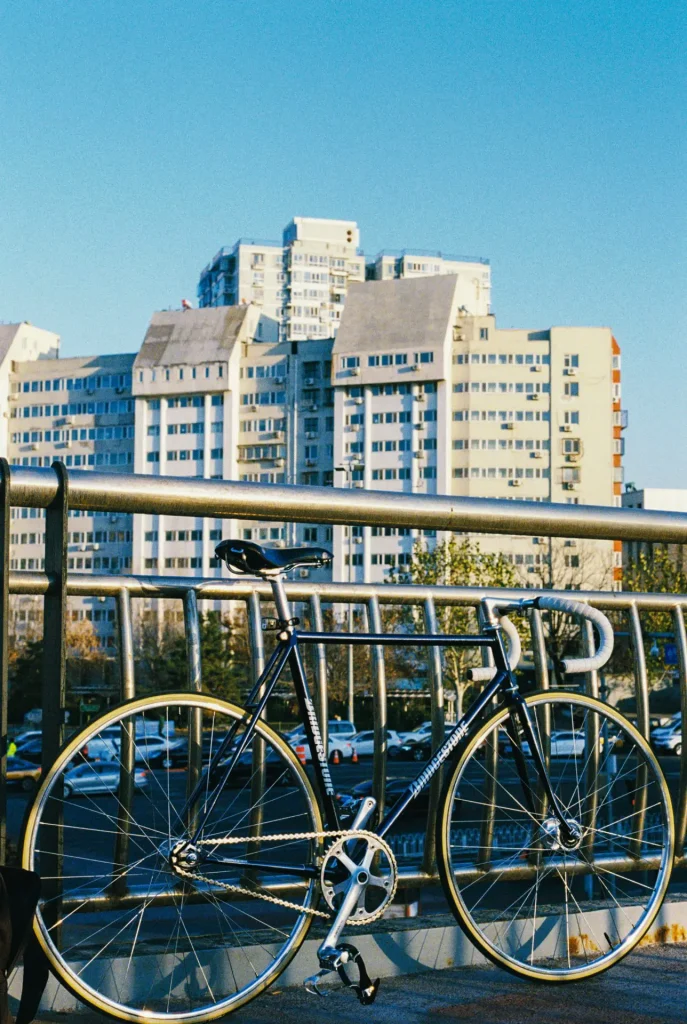
From summer to winter
Though all the places on my wishlist are special for me in some way, not every one of them can be easily photographed. It was not until I started shooting my little project that I finally realized how many trees had been planted along the streets in Beijing. I would picture a perfect spot to shoot from when I discovered an interesting building, only to find that it was completely blocked by the leaves when I actually went there later. One of my favourite photographers on 35mmc is Christian Schroeder. He mentioned in this post about shooting in December when leaves are gone and don’t obscure the buildings which I found really helpful.
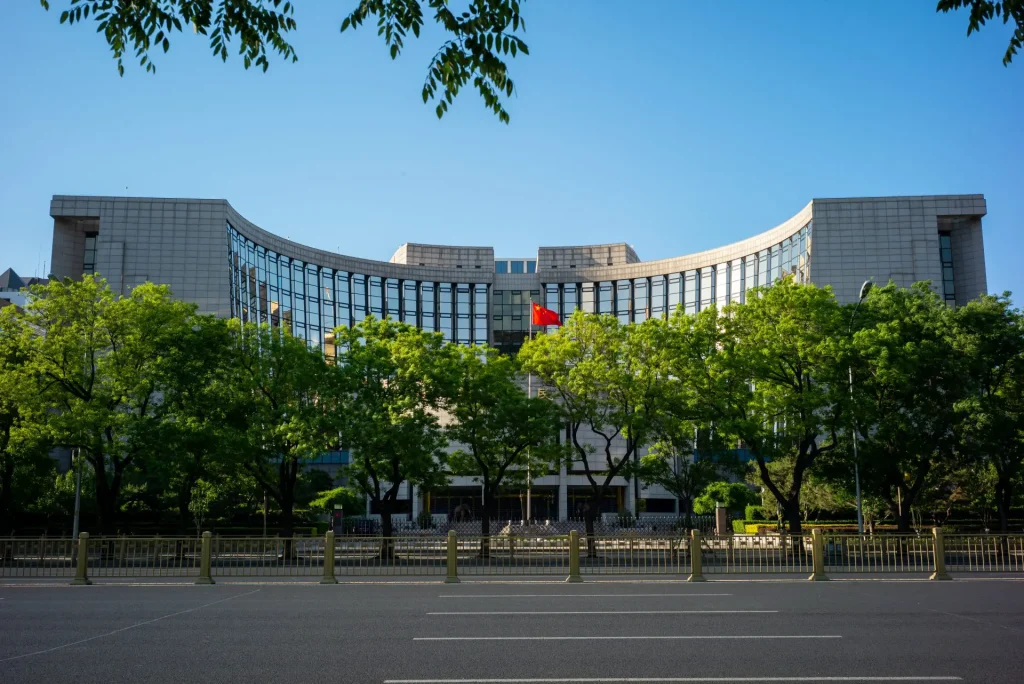
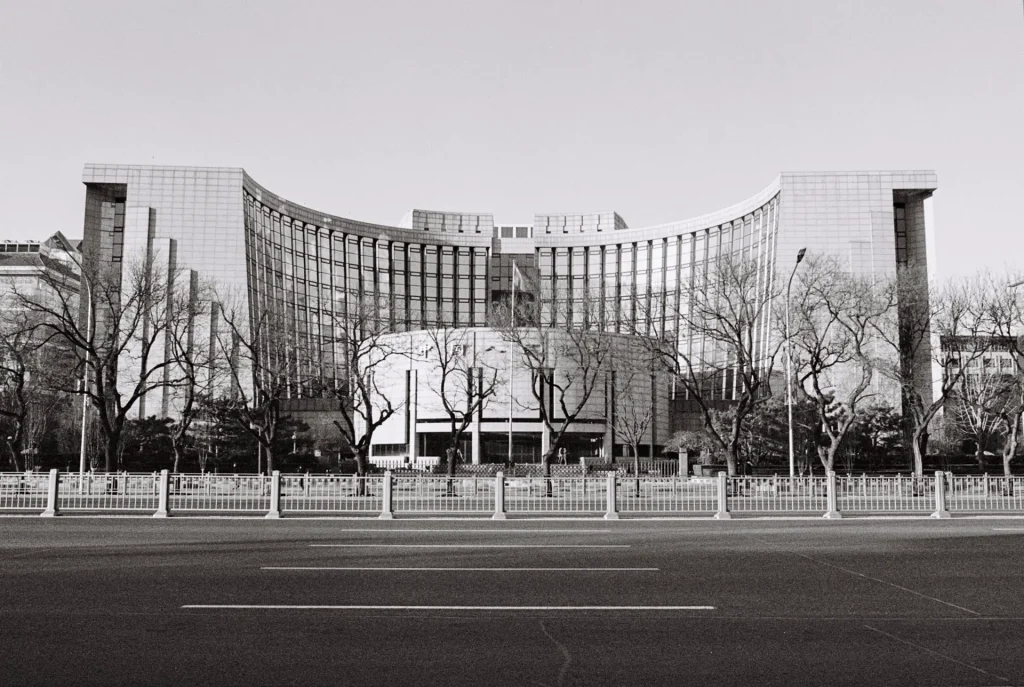
From ground to high up
During the early days of the project, I was restricted to the way of photographing a building by getting close to it first, avoiding any obstacles and shooting from the ground. Eventually, I found the perspective in the pictures made by this method a little unpleasant to look at as it made me think if I was looking up at them and stretching my neck. Besides, it’s just what people would perceive when they normally walk on the street.
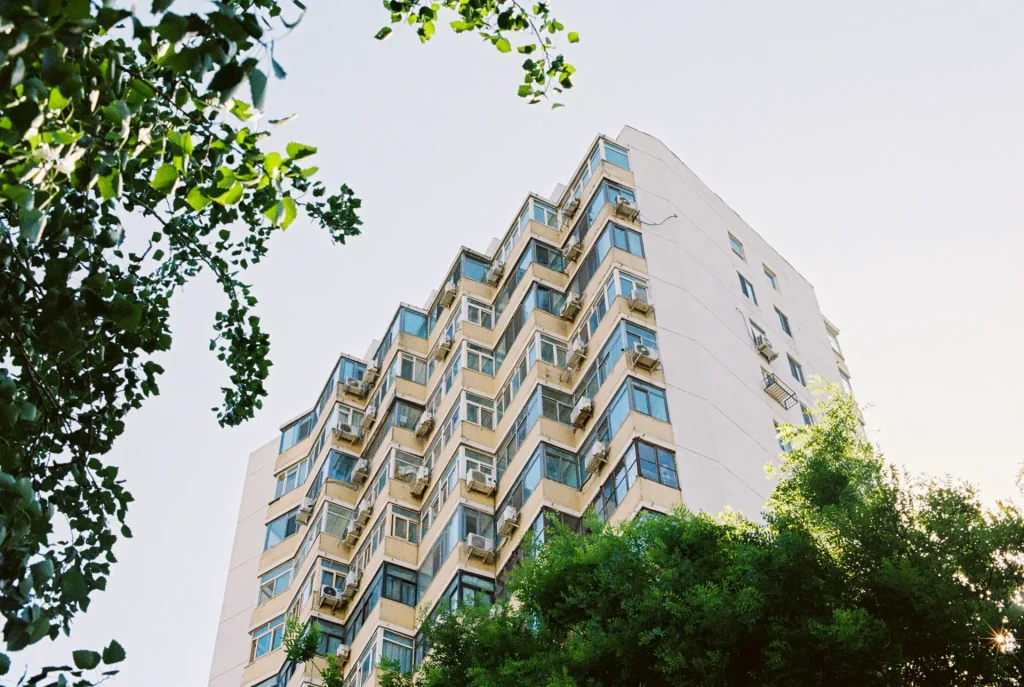
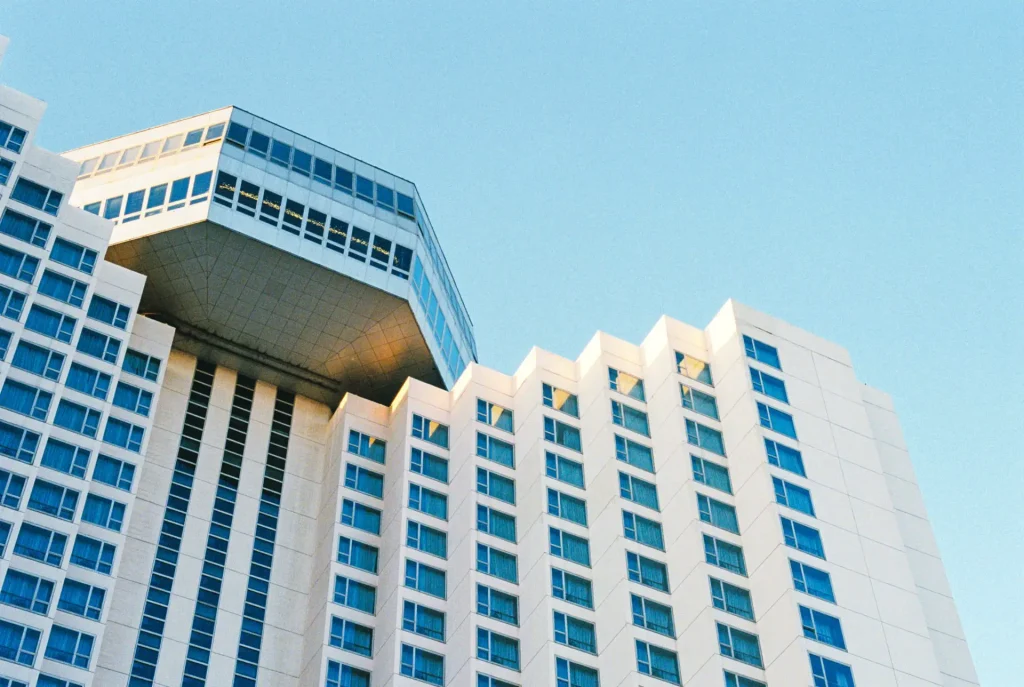
I guess it was caused by mostly three factors: a) being too close to the subject, b) being too low when shooting a high-rise building, and c) focal length not wide enough (or just another excuse to buy more gear). As a result, I started to learn to step back a bit and shoot from afar.
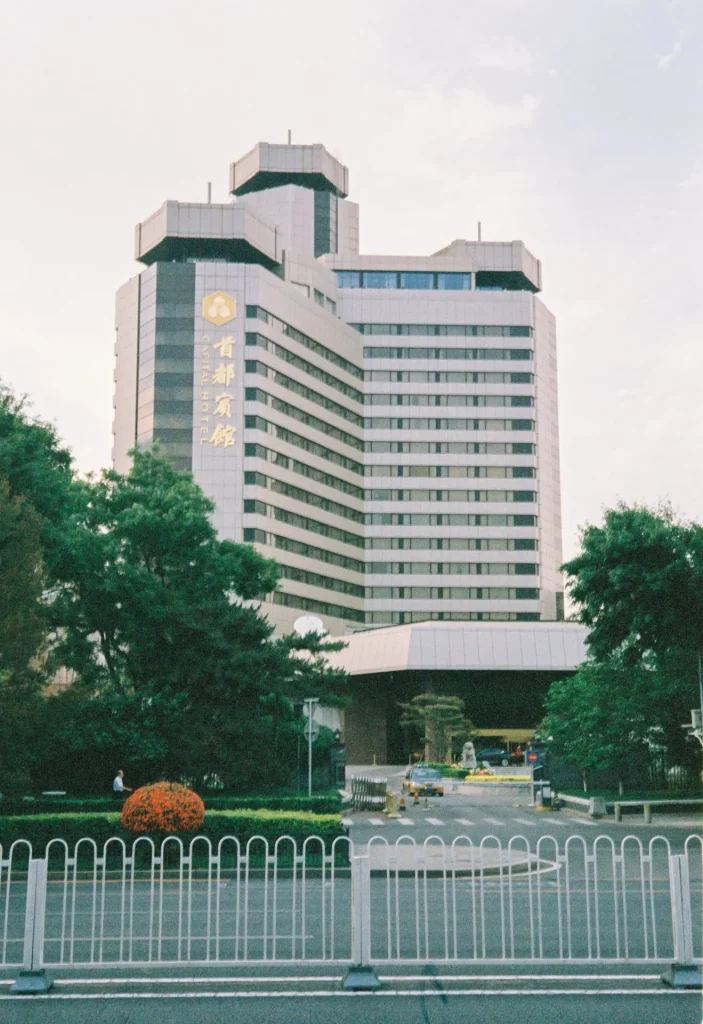
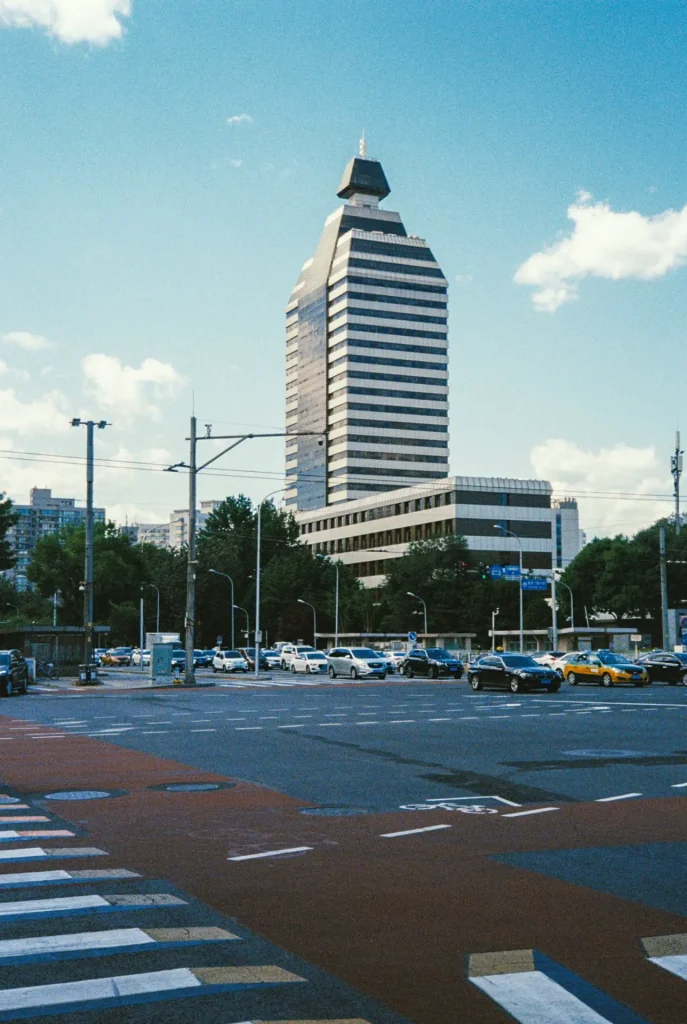
Recently, pedestrian overpass has also become my new friend and solution for b). Pictures made from there would just provide a different perspective and a more comfortable one to look at in my opinion. Now whenever I see a new place worth making the list, I would simultaneously look for an overpass or somewhere high up nearby first. Plus, it’s yet another way to avoid those annoying leaves.
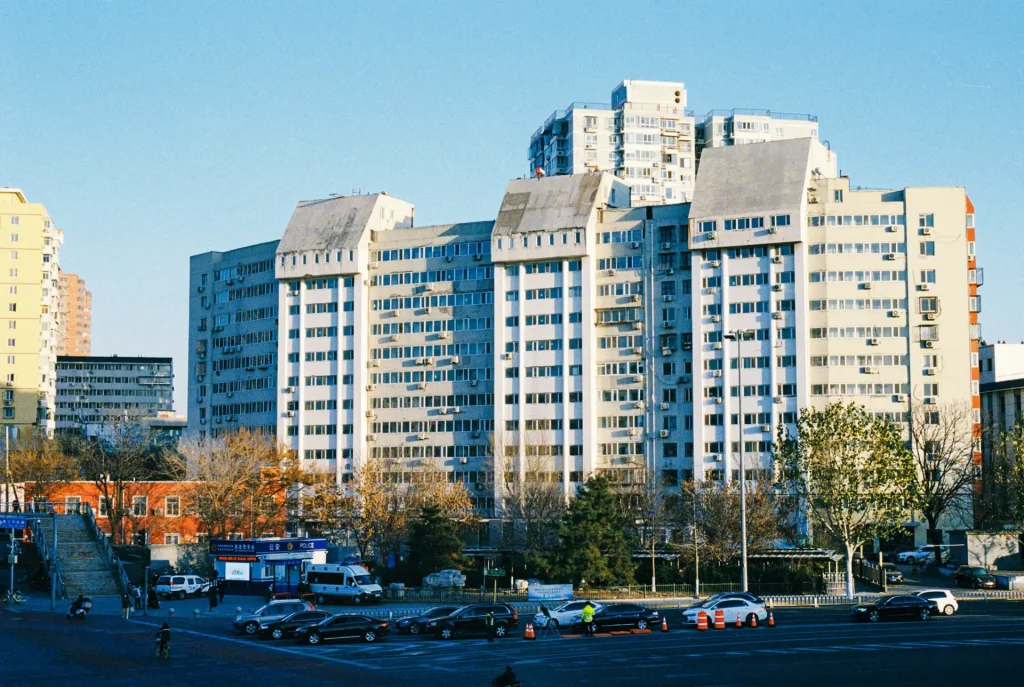
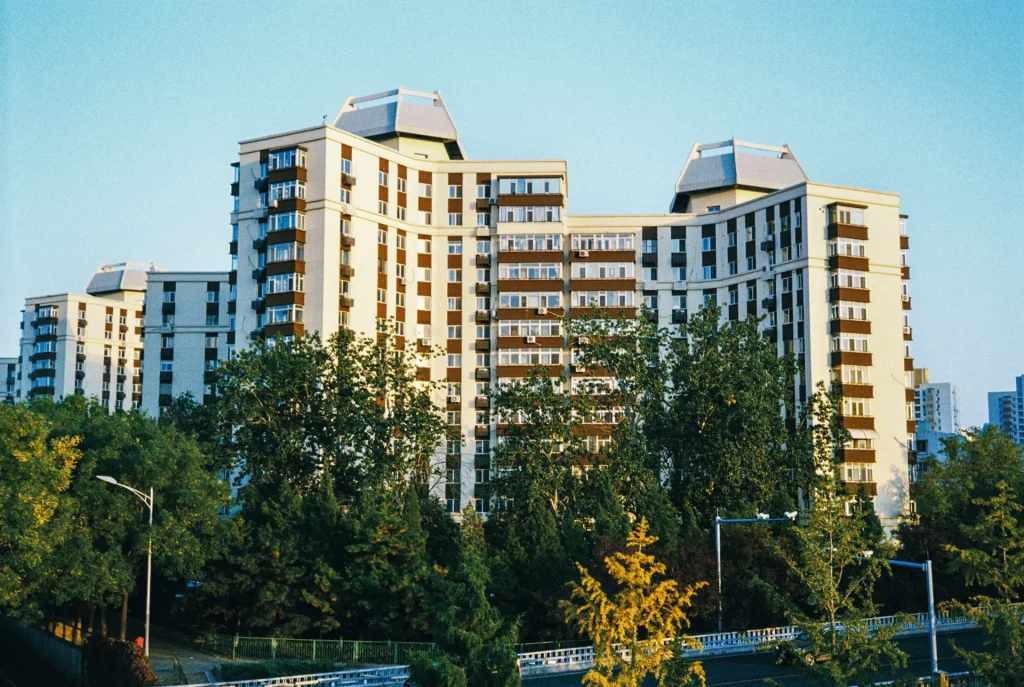
And Some More Shots…
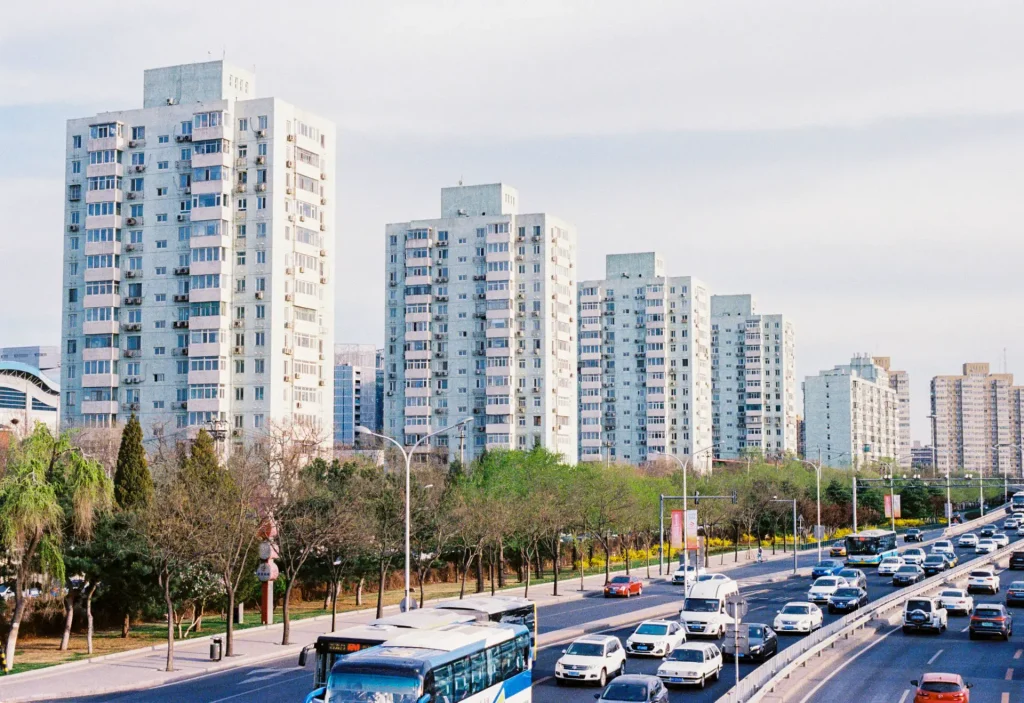
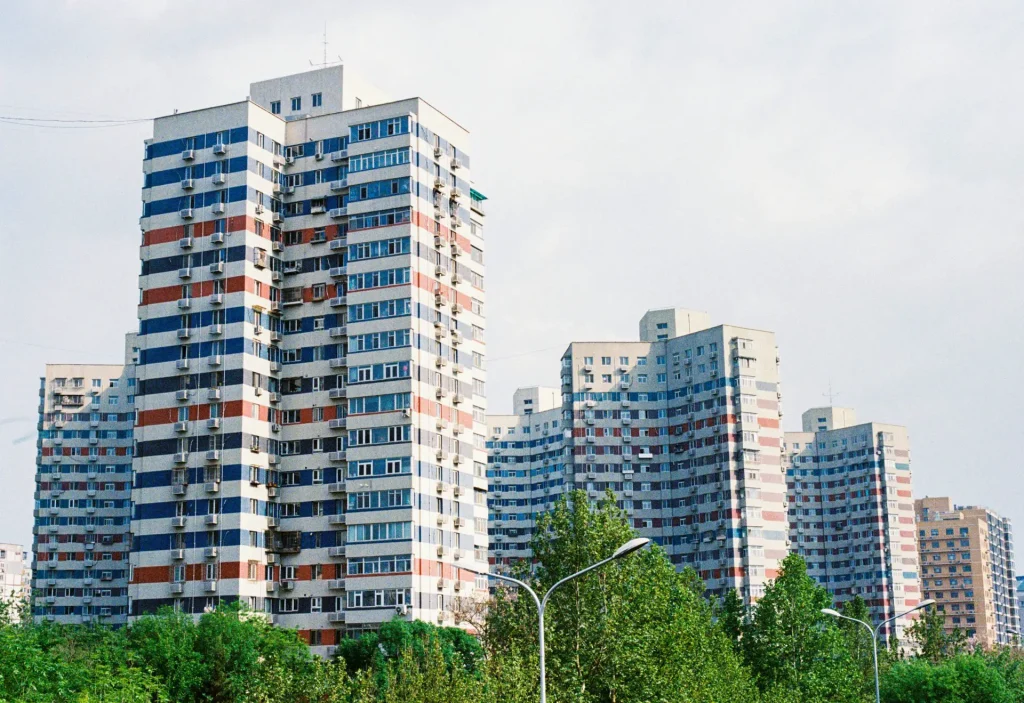
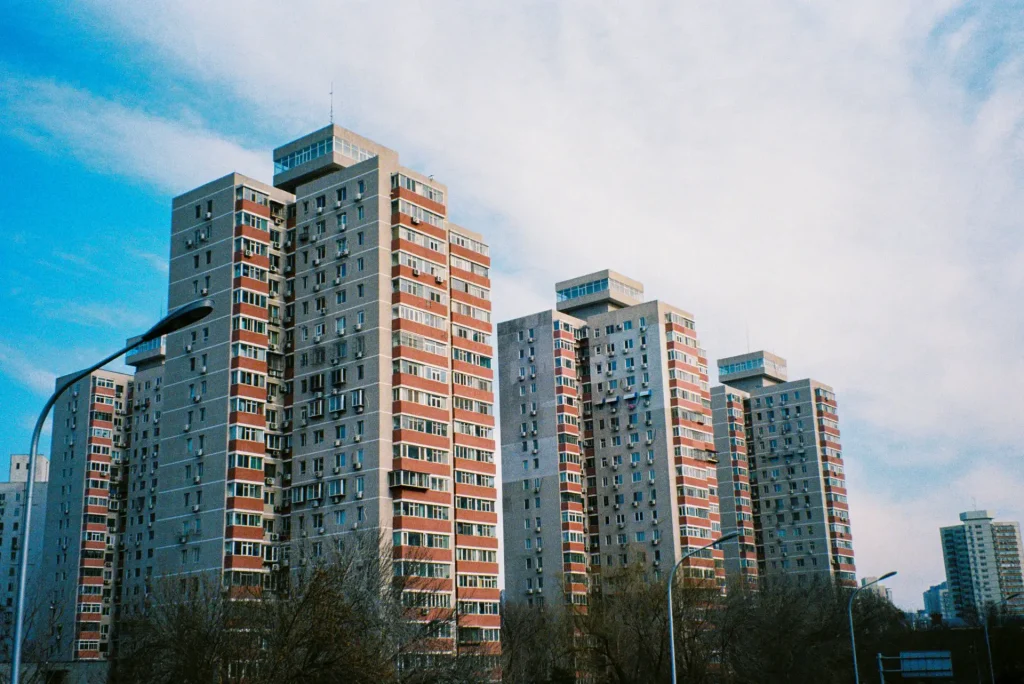
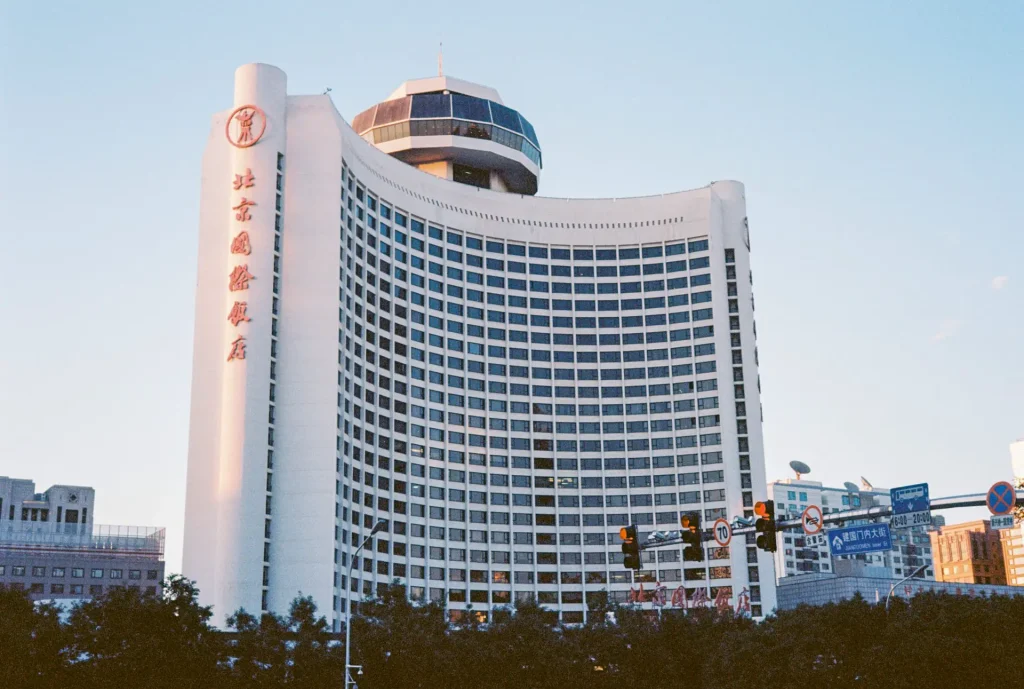
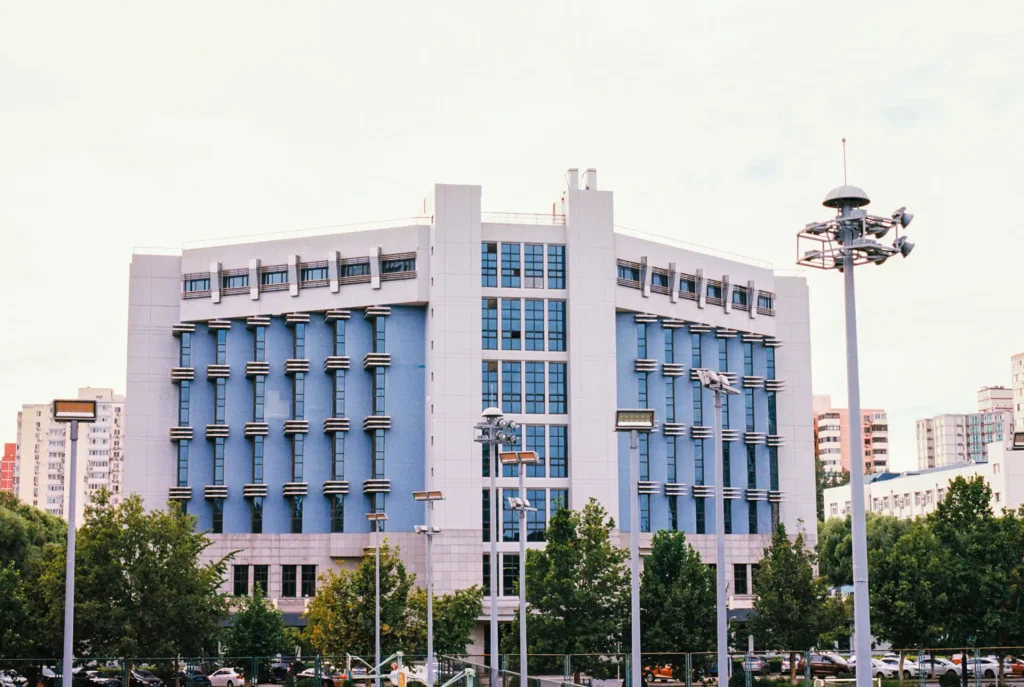
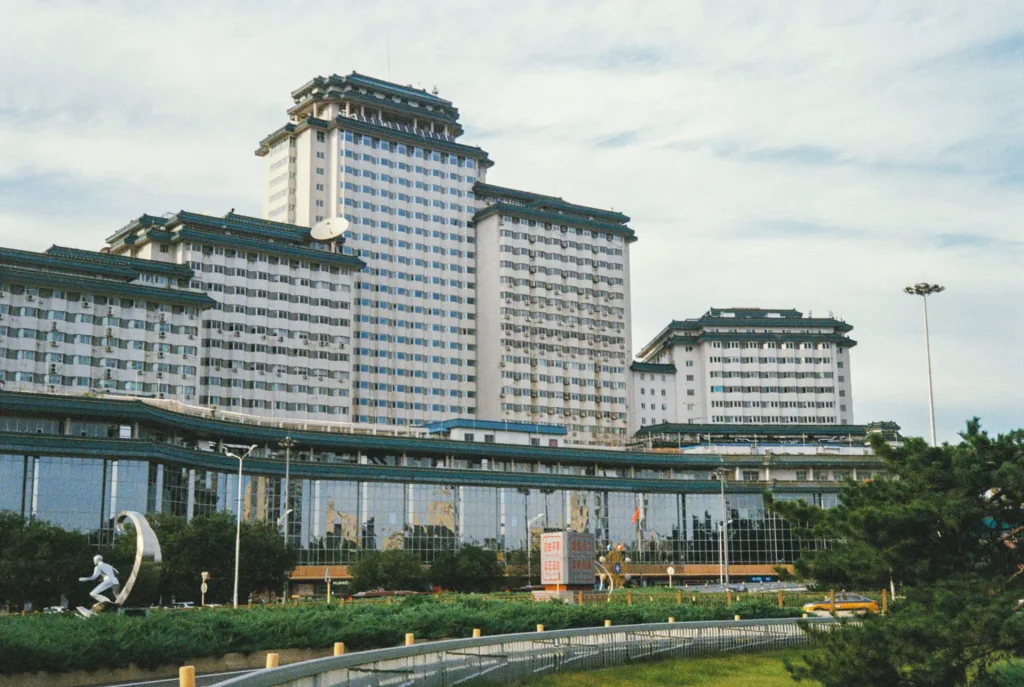
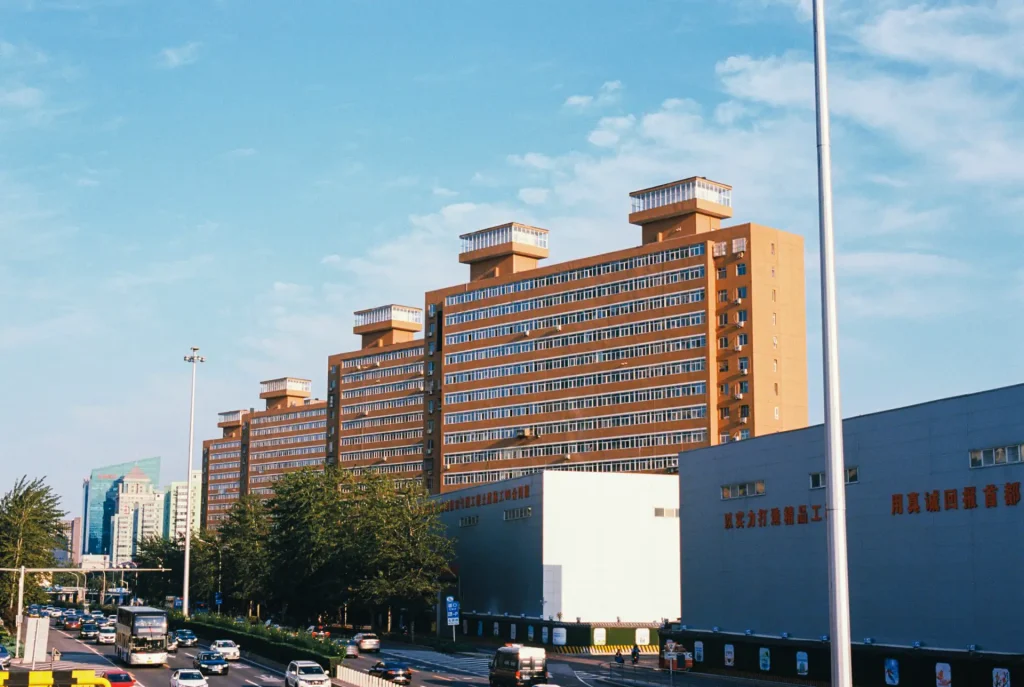
The Project Now
After only documenting Beijing’s modern architecture for less than two years, I’m as enthusiastic as ever as I’m still constantly exploring and looking for interesting examples from different corners unknown to me. The project is far from over as there are still so many places on my list which I haven’t been able to visit yet and more places I believe I haven’t even seen. When will the project be over? I just don’t have the answer to it right now.
While the project was first born out of my personal obsession with modern concrete residential buildings in Beijing, I now would like to let more people see the influence of modernist movement on this communist state which has probably been unknown to most. I’m by no means an expert in either photography or architecture, please feel free to point out any mistake I made about them and correct me. Hope you like the pictures.
You can find me on Instagram here. Thank you for reading!
Share this post:
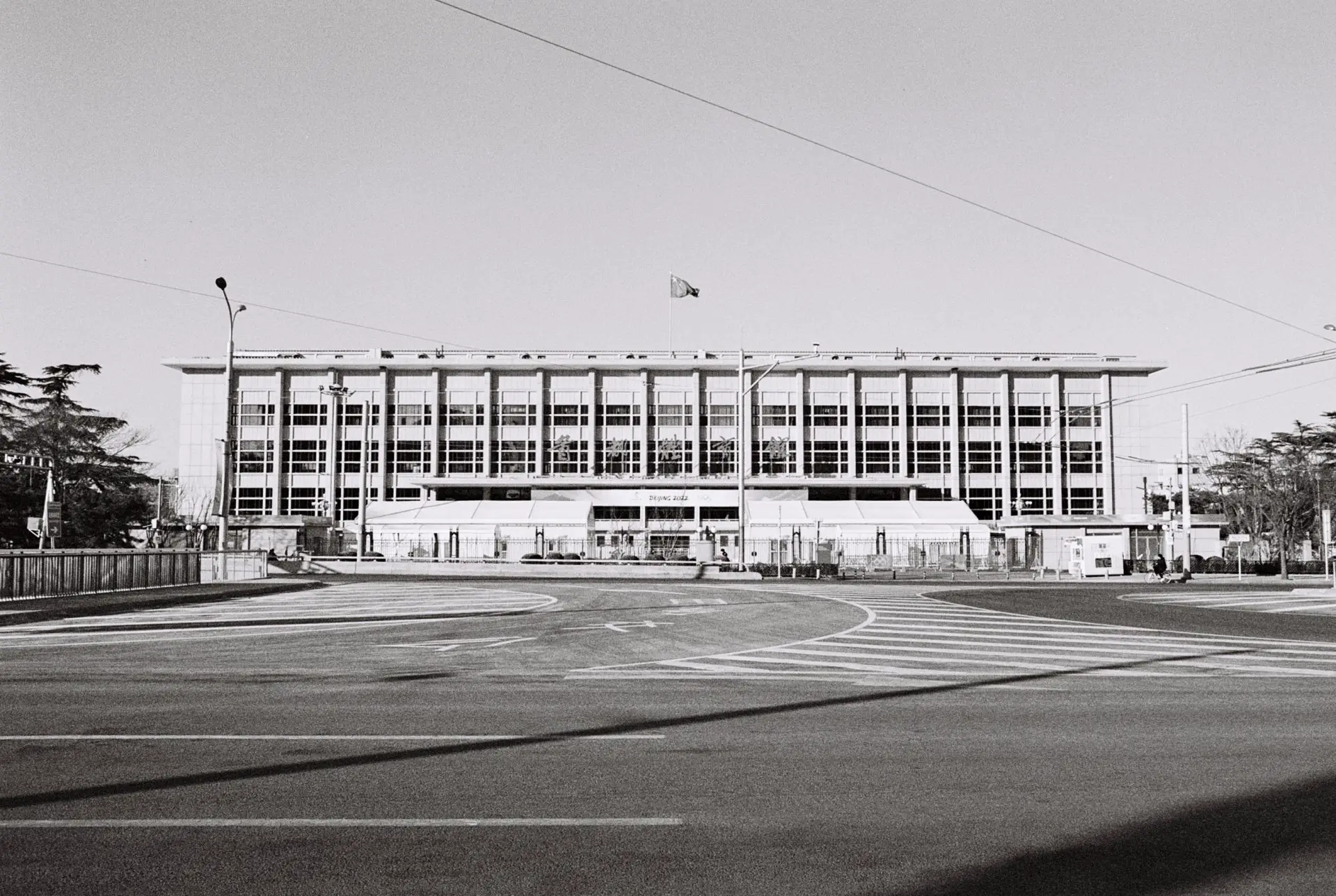








Comments
Bud Sisti on Documenting Beijing’s Modern Architecture – By Yuze Chen
Comment posted: 13/04/2022
Now, to the more important issue: I wish more photographers would undertake similar projects with such historical and sociological concerns. What might currently look to the unthinking like just dumb pictures of buildings will, in a few decades, become fascinating and valuable documents of a world that has passed. Approaching your project with a clear and organized vision now will be much appreciated by the citizens of the future.
I have some photos from the seventies and eighties of places I loved that have long since been overwhelmed by gentrification and "development". When I show them now, they elicit a degree of shock and disbelief that they never occasioned when they were fresh. I've learned a lesson from that, and now approach much of my documentary work with a very clear intent to educate and enlighten those who are perhaps not yet even born. It seems that your intent is similar. Keep up the good work!
Comment posted: 13/04/2022
Stefan Wilde on Documenting Beijing’s Modern Architecture – By Yuze Chen
Comment posted: 14/04/2022
I am very impressed with your project and the development you describe. From using a car to using a bike - totally agree, the mode of transport makes a difference to what you see and what you shoot - to the change in perspective to the change in season. Maybe now getting more close and personal with details of the buildings could be a further addition? Maybe, maybe not... Even as it is I find some of the pictures fascinating. The series of Furlong Li, Chedaogounan Li and Xibahebei are a great set showing three slightly different implementations of the same idea. Please share more of your pictures as the project continues! Thanks for posting!
Comment posted: 14/04/2022
Rock on Documenting Beijing’s Modern Architecture – By Yuze Chen
Comment posted: 14/04/2022
Comment posted: 14/04/2022
Gary on Documenting Beijing’s Modern Architecture – By Yuze Chen
Comment posted: 15/04/2022
Comment posted: 15/04/2022
Michael J on Documenting Beijing’s Modern Architecture – By Yuze Chen
Comment posted: 16/04/2022
Comment posted: 16/04/2022
Bryan Costin on Documenting Beijing’s Modern Architecture – By Yuze Chen
Comment posted: 26/04/2022
Comment posted: 26/04/2022